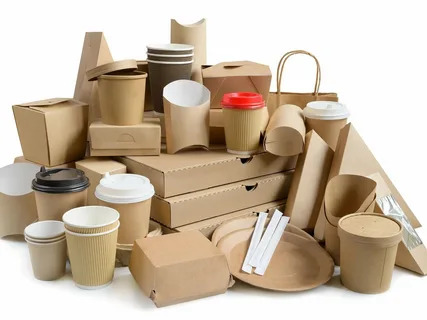The packaging materials used in product delivery play a significant role in shaping customer perceptions and satisfaction. From the moment a customer sees a product on a shelf or receives it via shipment, the packaging sets the tone for the entire experience. Packaging materials are not just functional; they convey a brand’s values, protect the product, and enhance the overall unboxing experience. As competition increases in the marketplace, companies are turning to innovative and sustainable packaging solutions to stand out and improve customer experience.
In this article, we will explore how packaging materials affect customer satisfaction, from ensuring product protection to influencing brand perception. We’ll also discuss how companies can leverage packaging to meet customer expectations and build loyalty. The right packaging material can influence customer satisfaction, loyalty, and even the decision to repurchase, making it a crucial element of any business strategy.
The Impact of Packaging Materials on Product Protection
The Role of Packaging in Product Safety
The primary function of packaging materials is to protect the product. Whether the item is fragile, perishable, or needs to be kept at a certain temperature, the packaging material ensures that it arrives in perfect condition. If a product arrives damaged, the customer’s satisfaction is immediately compromised. Packaging materials such as bubble wrap, foam inserts, and custom-designed containers are often used for fragile goods like electronics, cosmetics, and glass items. These protective materials minimize the risk of product damage during transportation and handling, which is crucial in maintaining high customer satisfaction levels.
Customer Confidence in Product Integrity
When customers purchase a product, they expect it to arrive in pristine condition. Well-packaged products give customers confidence that they are receiving what they paid for. Companies that invest in high-quality packaging materials demonstrate attention to detail and concern for their customers’ needs. This attention can have a positive influence on customer experience, as it reduces the chances of receiving damaged goods. On the other hand, poor packaging that doesn’t provide sufficient protection can leave customers feeling disappointed and frustrated, leading to negative reviews or product returns.
Sustainability and Eco-Friendly Packaging
Growing Demand for Sustainable Packaging
Today’s consumers are increasingly aware of the environmental impact of their purchases, and many prefer brands that use eco-friendly packaging materials. The use of sustainable packaging materials, such as biodegradable plastics, recycled paper, or plant-based packaging, has grown significantly as brands try to reduce their carbon footprint and align with consumers’ growing environmental concerns. Customers value companies that adopt environmentally responsible practices, and they often make purchasing decisions based on a company’s commitment to sustainability. The use of eco-friendly packaging materials can therefore enhance customer satisfaction and loyalty.
The Customer Perception of Eco-Conscious Brands
Brands that use recyclable and sustainable packaging materials send a message to their customers that they care not only about the quality of their products but also about the planet. This can increase customer satisfaction, as consumers feel good about supporting businesses that prioritize environmental sustainability. Companies that effectively communicate their commitment to sustainability through packaging can also build stronger emotional connections with customers. Customers are likely to appreciate the effort and reward the company with continued support. However, companies that fail to adopt environmentally friendly practices risk losing favor with eco-conscious consumers.
The Role of Packaging in Brand Perception
Packaging as a Reflection of Brand Identity
Packaging materials are often the first point of physical contact a customer has with a brand. Well-designed packaging creates a lasting impression and conveys the company’s brand values. For example, luxury brands often use high-quality, elegant packaging materials like embossed boxes, silk inserts, or custom wrapping paper to reflect their premium image. On the other hand, a minimalist brand might use simple, no-frills packaging that still emphasizes quality. The choice of packaging materials can communicate a lot about the brand’s identity, from its target demographic to its commitment to quality and style.
The Unboxing Experience and Customer Loyalty
The unboxing experience is a key moment that influences customer satisfaction. When packaging materials are thoughtfully designed, it can transform a simple product delivery into an exciting event. For instance, carefully wrapped items, personalized notes, or branded tissue paper make the customer feel valued. These small touches can significantly improve a customer’s perception of the brand and encourage repeat purchases. When a customer receives a well-packaged product, they are more likely to remember the experience positively and share it on social media, which can further enhance the brand’s reputation and customer loyalty.
Cost and Practicality of Packaging Materials
Balancing Cost and Quality in Packaging Materials
While high-quality packaging materials can enhance customer satisfaction, businesses must also consider cost-effectiveness when selecting packaging. Using high-end materials may increase the overall cost of production, but it can lead to higher customer satisfaction and fewer returns due to product damage. However, companies must strike a balance between quality and cost. The challenge lies in finding packaging materials that not only protect the product but also align with the company’s budget. In some cases, brands might opt for less expensive materials, but they can still focus on quality design to ensure that the overall customer experience is positive.
Packaging Materials and Operational Efficiency
Apart from cost and customer satisfaction, packaging materials also play a significant role in operational efficiency. Packaging that is easy to assemble and ship can streamline logistics and reduce handling times. For instance, using lightweight packaging materials can reduce shipping costs and make the product more affordable to the consumer. Similarly, packaging that is easy to recycle or dispose of can help companies save on waste disposal costs. This practicality aspect of packaging can also contribute to a positive customer experience by offering ease of use and reducing hassle during product returns or disposals.
The Psychological Impact of Packaging Materials
Packaging as a Tool for Customer Emotions
Packaging materials not only protect and display a product but can also trigger emotions in the customer. The psychological impact of well-chosen packaging materials can lead to increased customer satisfaction. For example, customers may associate premium materials, such as sturdy boxes or glossy finishes, with higher-quality products. Conversely, flimsy or unattractive packaging can lead to feelings of disappointment and dissatisfaction. The tactile nature of packaging—such as smoothness, texture, or weight—can also influence a customer’s perception of a product. Thoughtful packaging can evoke positive emotions, reinforcing a sense of value and luxury.
Creating a Memorable Customer Experience
A memorable customer experience often stems from the emotions evoked by packaging. Companies that focus on packaging as a tool for storytelling or creating excitement are more likely to engage customers on a deeper level. For example, limited-edition packaging for special promotions or seasonal items creates a sense of exclusivity and urgency. Customers who receive such items feel like they are part of something special, which enhances satisfaction. By using packaging materials to evoke emotion, brands can enhance customer engagement and create lasting memories, which ultimately influences their decision to repurchase.
Conclusion
In today’s competitive market, packaging materials have become more than just a means of protecting the product. They play a critical role in shaping customer experience and satisfaction. From providing safety and sustainability to enhancing brand perception and creating emotional connections, packaging materials are a key element in the customer journey. By selecting the right packaging materials, businesses can improve customer satisfaction, build brand loyalty, and create a positive, lasting impression. Brands that understand the power of packaging and invest in materials that align with customer values will continue to thrive in an increasingly demanding marketplace.









